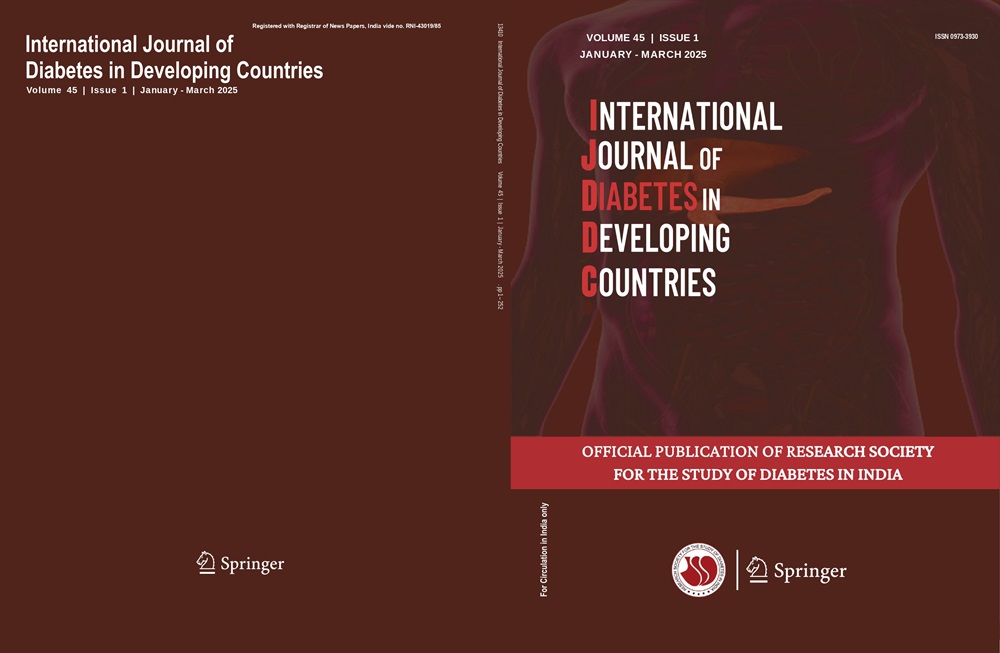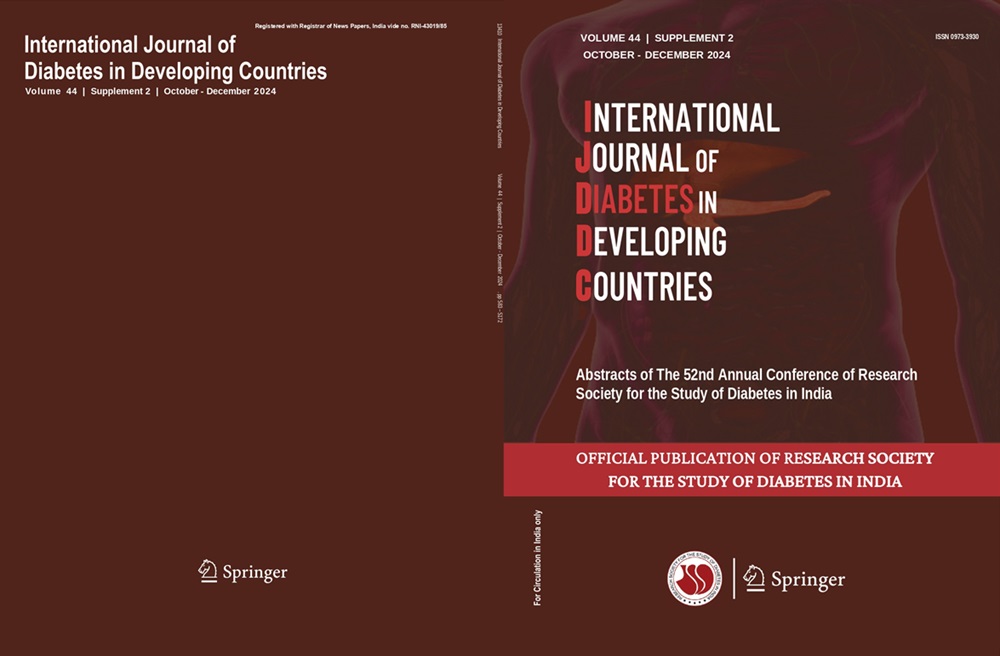Sunetra Mondal, Riddhi Das Gupta, Moushumi Lodh, Ashok Parida, Mandira Haldar, Arunangshu Ganguly
Keywords
Pancreatic DM • Diabetic ketoacidosis • DKA • T3cDM
Objective There is scarcity of data on diabetic ketoacidosis (DKA) in patients with diabetes mellitus (DM) due to diseases of exocrine pancreas (T3DM).
Methods We did a retrospective record-review of patients admitted with DKA from 2017 to 2022. Clinical and biochemical characteristics were compared among DKA cases in type 1 DM (T1DM), type 2 DM (T2DM), and T3DM. Logistic regression was performed to find independent predictors of death and DKA complications.
Results Out of 107 cases, n = 79 were included (T1DM = 30, T2DM = 37, T3DM = 12). All cases of DKA in T3DM were of mild or moderate severity. The time to resolution of DKA was shortest for T3DM (p = 0.04). Death rates were similar in all groups but in T3DM, all deaths occurred after resolution of DKA. There was a precipitating factor for DKA in 11/12, 91.7% cases in T3DM group, most common being infections (58.3%) followed by glucocorticoid use (16.7%). T3DM cases had shorter duration of DM but higher CRP, procalcitonin, and qSOFA scores for infections precipitating DKA (pall < 0.03). CRP was an independent predictor for DKA-related complications (OR: 1.01, 1.001–1.01, p = 0.04).
Conclusion This is the largest single-center cohort of T3DM with new-onset DKA, suggesting severe infections and glucocorticoid usage as major precipitating factors, while clinical course and outcomes were distinctly different from T2DM and T1DM patients with DKA.




